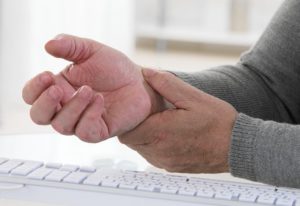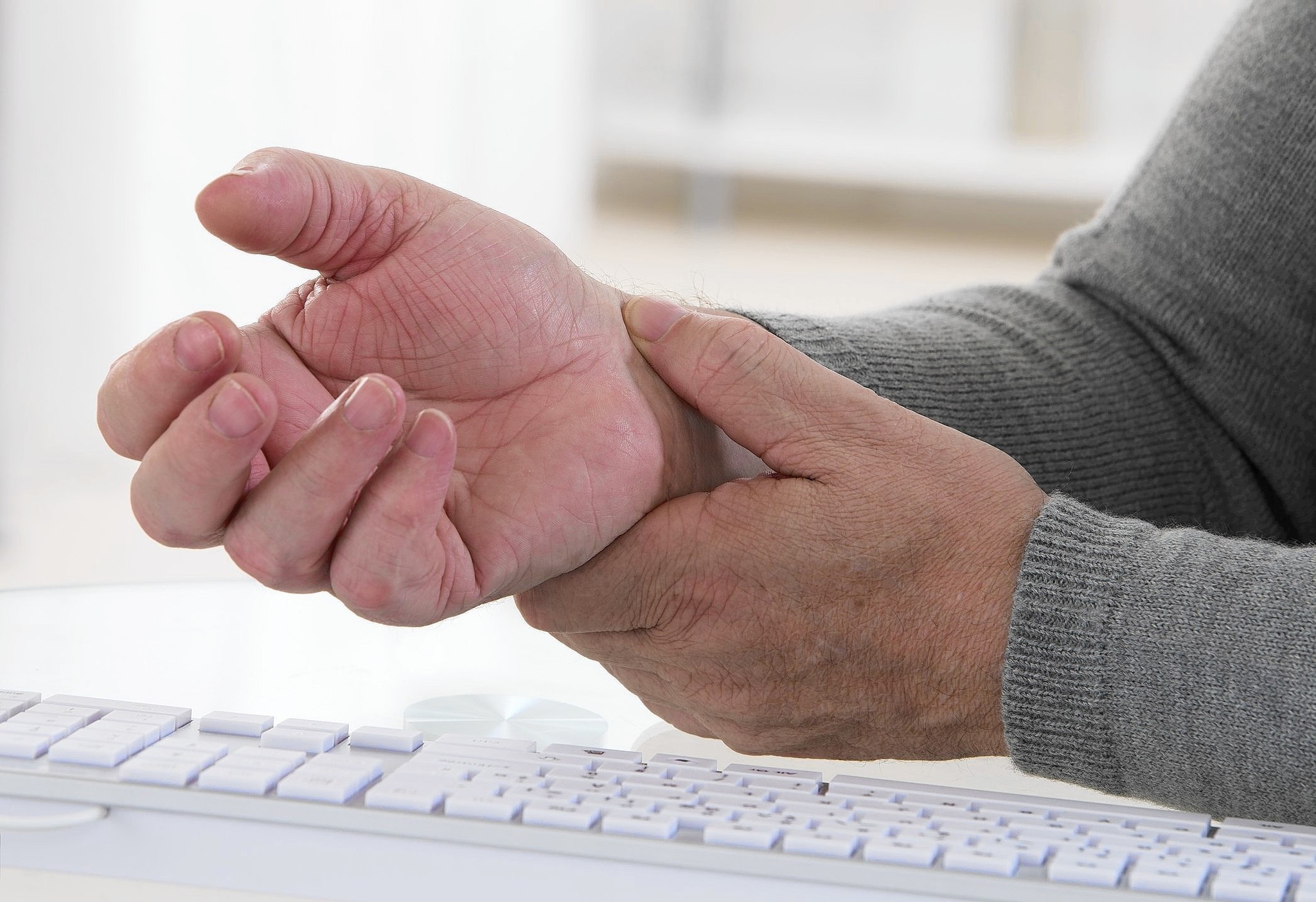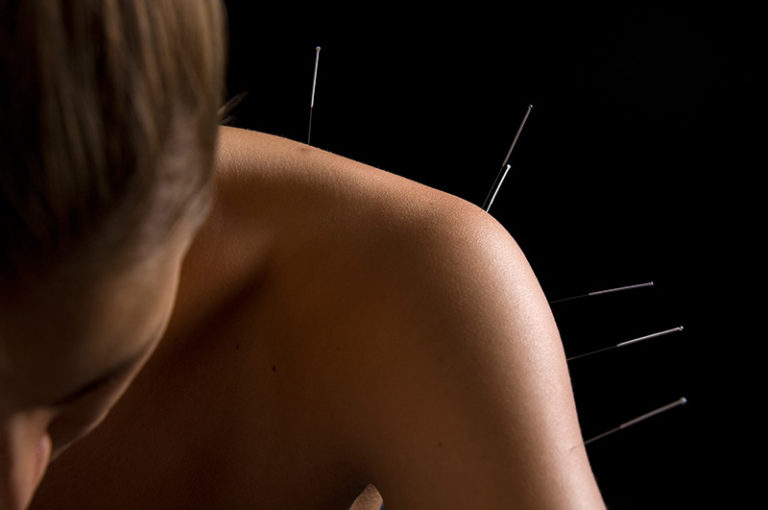 Carpal Tunnel Syndrome occurs when the median nerve is compressed at the wrist where it passes through a window bordered by bone below (deep) and to the sides and a ligament above (superficial). Several other structures pass through this space, notably the tendons of muscles flexing the fingers and wrist. When the space becomes too tight, perhaps due to inflammatory swelling of one or several of these tendons, the median nerve is compressed, causing numbness, tingling, or pain at the wrist, palm, or first three fingers (thumb, index, middle).
Carpal Tunnel Syndrome occurs when the median nerve is compressed at the wrist where it passes through a window bordered by bone below (deep) and to the sides and a ligament above (superficial). Several other structures pass through this space, notably the tendons of muscles flexing the fingers and wrist. When the space becomes too tight, perhaps due to inflammatory swelling of one or several of these tendons, the median nerve is compressed, causing numbness, tingling, or pain at the wrist, palm, or first three fingers (thumb, index, middle).
In most patients, carpal tunnel syndrome gets worse over time, so early diagnosis and treatment are important. Early on, symptoms can often be relieved with simple measures like wearing a wrist splint or avoiding certain activities.
If pressure on the median nerve continues, however, it can lead to nerve damage and worsening symptoms. To prevent permanent damage, surgery to take pressure off the median nerve may be recommended for some patients.
Acupuncture is a safe, low-risk, low side-effect intervention. It’s perfect for a first-line approach, and it’s something patients should consider before trying more invasive procedures like surgery. Acupuncture can be used for pain control, to provide local anti-inflammatory effects at the wrist, and to address the larger structural set-up for the local wrist problems. In addition to aggravated muscles and tendons of the forearm, postural stresses at the neck and upper back will often need to be addressed for enduring relief; the neuromuscular effects of acupuncture can help achieve this.
Acupuncture For Carpal Tunnel Syndrome
Increased body fluid levels during pregnancy can lead to inflammatory discomfort, particularly carpal tunnel syndrome. Acupuncture offers a safe drug-free treatment which can reduce the local swelling and reduce pain.
Does Science Support Acupuncture to Treat Carpal Tunnel Syndrome?
According to a new study published in the journal Brain, It’s an ideal condition for measuring the effectiveness of a treatment, because unlike most chronic pain disorders, carpal tunnel syndrome is associated with measurable, physiological changes in the body. Sufferers experience a slowdown of nerve impulses traveling across the wrist, which can be detected by electrodes attached to the skin. They also experience destructive changes in the somatosensory cortex, the part of the brain responsible for the sense of touch. Nerve signals from the hand become “blurred,” says lead author Vitaly Napadow, associate professor at the Martinos Center for Biomedical Imaging at Massachusetts General Hospital and Harvard Medical School. Brain cells that usually respond to touch signals from individual fingers start to respond to signals from multiple fingers, he says.
People in the study were split into three groups, two of which received 16 sessions of electro-acupuncture over eight weeks, either on their affected wrist and forearm or on their ankle opposite that arm. The third group received “sham” electro-acupuncture, which used needles that didn’t penetrate the skin on fake acupuncture points.
After the treatments were over, all three groups reported improvements in pain and numbness. But the objective measure of nerve conduction at the wrist only improved in the groups who had real acupuncture. Those who had real acupuncture at the affected arm (but not at the ankle) also experienced significant brain remapping, Napadow says. Before-and-after MRI scans showed that some of the carpal-tunnel related damage to their somatosensory cortexes had been partially repaired.
People who got real acupuncture seemed to have longer term benefits, too. At a three-month follow-up, people who experienced this type of brain remapping were more likely to report sustained or continued improvement in functionality—and in symptoms like pain, numbness, and tingling—than those who didn’t.
The study suggests that while sham and real acupuncture might both relieve pain temporarily, real acupuncture has the most potential for lasting change.
“I want to stress that we did not heal or cure anybody, but we did see improvements,” says Napadow. “The fact that improvement was retained three months later—we think that’s very interesting and very important.”



